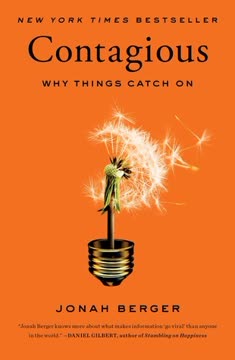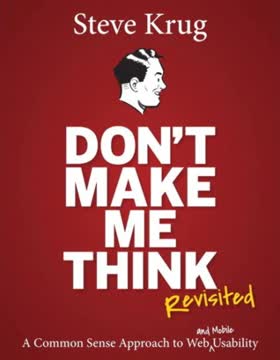가지 주요 요점
1. 훅 모델: 습관 형성 제품을 만드는 프레임워크
습관 형성 기술은 우리의 일상 생활을 움직이는 보이지 않는 엔진입니다.
훅 모델은 트리거, 행동, 가변 보상, 투자라는 네 가지 단계로 구성됩니다. 이 사이클이 반복되면 강력한 사용자 습관이 형성됩니다. 페이스북, 트위터, 핀터레스트와 같은 회사들은 이 모델을 성공적으로 구현하여 사용자가 자주 그리고 자발적으로 참여하는 제품을 만들었습니다.
핵심 구성 요소:
- 트리거: 행동의 촉발제
- 행동: 보상을 기대하며 수행하는 가장 간단한 행동
- 가변 보상: 사용자 요구를 충족시키면서 더 많은 것을 원하게 만드는 보상
- 투자: 사용자가 시스템에 가치를 투입하여 재방문 가능성을 높이는 단계
이 단계를 이해하고 구현함으로써 제품 디자이너는 사용자의 문제와 욕구에 맞는 경험을 창출할 수 있으며, 궁극적으로 자동적인 행동과 참여 증가를 이끌어낼 수 있습니다.
2. 트리거: 사용자 행동을 시작하는 불꽃
외부 트리거는 정보를 내포하고 있으며, 사용자가 다음에 무엇을 해야 하는지 알려줍니다.
트리거는 두 가지 유형이 있습니다: 외부 트리거와 내부 트리거. 외부 트리거는 이메일, 앱 아이콘, 알림과 같은 환경적 신호입니다. 내부 트리거는 자동으로 마음속에 나타나며, 종종 지루함, 두려움, 우유부단함과 같은 부정적인 감정입니다.
효과적인 트리거:
- 적시에 실행 가능하게 설정됨
- 즉각적이고 장기적인 참여를 유도
- 시간이 지남에 따라 사용자를 외부 트리거에서 내부 트리거로 전환
습관 형성 제품을 만들기 위해 디자이너는 사용자의 내부 트리거를 이해하고 외부 트리거를 사용하여 초기 참여를 유도해야 합니다. 사용자가 제품과 반복적으로 상호작용하면서 제품과 내부 요구 사이의 연관성을 형성하게 되어 결국 자동적인 행동으로 이어집니다.
3. 행동: 보상으로 가는 길을 단순화하기
행동이 발생할 가능성을 높이기 위해, 포그는 디자이너에게 사용자의 가장 희소한 자원을 기준으로 단순성에 집중하라고 지시합니다.
단순성은 사용자 행동을 유도하는 핵심입니다. 행동이 수행하기 쉬울수록 사용자가 그것을 할 가능성이 높아집니다. 이 단계는 포그 행동 모델을 기반으로 하며, 행동이 발생하기 위해서는 동기, 능력, 트리거라는 세 가지 요소가 결합되어야 한다고 주장합니다.
능력을 높이기 위해:
- 필요한 시간 줄이기
- 금전적 비용 감소
- 신체적 노력 최소화
- 인지적 부담 줄이기
- 사회적 규범에 맞추기
- 비일상적인 행동 만들기
구글, 트위터, 인스타그램과 같은 성공적인 제품들은 사용자 행동을 단순화하는 기술을 마스터했습니다. 장애물을 제거하고 원하는 행동을 수행하기 쉽게 만들어 이 회사들은 사용자 참여를 증가시키고 강력한 습관을 형성했습니다.
4. 가변 보상: 사용자를 계속 참여하게 만드는 예측 불가능한 스릴
가변 보상은 사용자를 끌어들이는 가장 강력한 도구 중 하나입니다.
가변성의 힘은 사용자의 참여와 동기를 높이는 능력에 있습니다. 보상이 예측 불가능할 때, 그것은 집중된 정신 상태를 만들어 뇌의 도파민 시스템을 활성화하고 판단과 이성을 담당하는 영역을 억제합니다.
세 가지 유형의 가변 보상:
- 부족: 다른 사람들로부터의 사회적 보상
- 사냥: 물질적 자원이나 정보를 찾는 것
- 자기: 숙달이나 완성의 내적 보상
페이스북(부족), 트위터(사냥), 코드카데미(자기)와 같은 회사들은 이러한 보상 유형을 효과적으로 사용하여 사용자가 계속 돌아오게 만듭니다. 사용자의 요구를 충족시키면서 더 많은 것을 원하게 만드는 가변 보상은 제품에 대한 강력한 동기를 부여합니다.
5. 투자: 사용자 노력이 제품 가치를 높이는 방법
투자 단계의 큰 아이디어는 사용자가 서비스가 사용과 개인적 투자를 통해 더 나아질 것이라는 이해를 활용하는 것입니다.
투자 단계는 장기적인 참여를 창출하는 데 중요합니다. 사용자가 시스템에 가치를 투입하여 재방문 가능성을 높이는 단계입니다. 이 단계는 매몰 비용 오류와 소유 효과와 같은 여러 심리적 원칙을 활용합니다.
투자의 형태:
- 시간
- 데이터
- 노력
- 사회적 자본
- 돈
투자는 서비스의 미래 사용을 개선하거나 사용자가 플랫폼에 "가치 저장"을 하도록 초대하거나 추가 투자를 유도할 수 있습니다. 예로는 링크드인의 프로필 완성, 틴더의 스와이프 메커니즘, 스냅챗의 연속 기능이 있습니다. 작은 투자를 장려함으로써 제품은 시간이 지남에 따라 사용자에게 더 가치 있게 되어 지속적인 참여 가능성을 높입니다.
6. 습관 형성 기술 설계의 윤리적 고려사항
훅 모델은 근본적으로 사람들의 행동을 변화시키는 것이지만, 설득력 있는 제품을 만드는 힘은 신중하게 사용해야 합니다.
조작 매트릭스는 기업가가 그들의 습관 형성 제품의 윤리를 평가하는 도구입니다. 두 가지 주요 질문을 던집니다: "내가 이 제품을 사용할 것인가?"와 "이 제품이 사용자의 삶을 실질적으로 개선할 것인가?"
네 가지 유형의 창작자:
- 촉진자: 자신이 사용할 것이며 사용자의 삶을 개선한다고 믿는 제품을 만드는 사람
- 행상인: 자신의 제품이 삶을 개선한다고 믿지만 자신은 사용하지 않는 사람
- 연예인: 자신이 사용할 제품을 만들지만 반드시 삶을 개선하지는 않는 사람
- 딜러: 자신이 사용하지 않으며 삶을 개선한다고 믿지 않는 제품을 만드는 사람
제품 창작자는 촉진자가 되기 위해 노력해야 하며, 사용자의 삶을 진정으로 개선하는 제품을 만들면서 잠재적인 부정적 영향을 염두에 두어야 합니다. 이 접근 방식은 윤리적 고려사항과 일치할 뿐만 아니라 장기적인 성공 가능성도 높입니다.
7. 습관 형성 제품의 기회 식별
새로운 기술이 갑자기 행동을 더 쉽게 만들 때마다 새로운 가능성이 탄생합니다.
혁신의 기회는 종종 기술 발전, 사용자 행동의 변화, 인터페이스 디자인의 변화에서 발생합니다. 이러한 기회를 식별함으로써 기업가는 실제 사용자 요구를 해결하고 지속적인 습관을 형성하는 제품을 만들 수 있습니다.
탐색할 영역:
- 초기 행동: 주류가 될 수 있는 초기 채택 패턴
- 가능하게 하는 기술: 특정 행동을 더 쉽게 만드는 새로운 인프라
- 인터페이스 변화: 사용자가 기술과 상호작용하는 방식의 변화
예로는 스마트폰의 등장으로 모바일 우선 제품이 가능해지고, 사용자 생성 콘텐츠를 활용하는 소셜 미디어 플랫폼, 웨어러블 기술이 건강 및 피트니스 애플리케이션에 새로운 가능성을 창출하는 것이 있습니다. 이러한 변화를 주시함으로써 기업가는 습관 형성 제품을 만들 수 있는 독특한 기회를 식별할 수 있습니다.
8. 습관 테스트 프로세스: 사용자 참여 측정 및 개선
습관 테스트는 제품의 열성 사용자를 발견하고, 어떤 제품 요소가 습관을 형성하는지(있는 경우) 그리고 왜 그 요소가 사용자 행동을 변화시키는지 알아내는 데 도움이 됩니다.
습관 테스트 프로세스는 식별, 코딩, 수정의 세 단계로 구성됩니다. 이 반복적인 접근 방식은 제품 디자이너가 제품의 습관 형성 잠재력을 측정하고 개선하는 데 도움이 됩니다.
습관 테스트의 단계:
- 식별: 열성 사용자가 누구인지 결정
- 코딩: 이 열성 사용자가 취하는 행동 이해
- 수정: 더 많은 사용자가 동일한 경로를 따르도록 제품을 조정
고려해야 할 주요 지표는 사용 빈도, 열성 사용자의 비율, 특정 행동 패턴입니다. 사용자 데이터를 기반으로 제품을 지속적으로 테스트하고 개선함으로써 제품의 습관 형성 잠재력과 전체 성공을 높일 수 있습니다.
마지막 업데이트 날짜:
FAQ
What's "Hooked: A Guide to Building Habit-Forming Technology" about?
- Author and Purpose: Written by Nir Eyal with Ryan Hoover, the book explores how to create habit-forming products using psychological principles.
- Core Concept: It introduces the Hook Model, a four-step process that companies use to encourage user habits.
- Target Audience: The book is aimed at entrepreneurs, product managers, and designers interested in understanding user behavior.
- Practical Application: It provides actionable insights for building products that people use regularly without relying on expensive marketing.
Why should I read "Hooked: A Guide to Building Habit-Forming Technology"?
- Understand User Behavior: Gain insights into the psychological triggers that drive user engagement and retention.
- Improve Product Design: Learn how to design products that become a natural part of users' routines.
- Competitive Advantage: Discover how habit-forming products can provide a significant edge in crowded markets.
- Ethical Considerations: The book also addresses the moral implications of creating addictive technologies.
What is the Hook Model in "Hooked"?
- Four Phases: The Hook Model consists of Trigger, Action, Variable Reward, and Investment.
- Trigger: Initiates the behavior, can be external (notifications) or internal (emotions).
- Action: The simplest behavior in anticipation of a reward.
- Variable Reward and Investment: Keeps users engaged by offering unpredictable rewards and encouraging them to invest in the product.
What are the key takeaways of "Hooked: A Guide to Building Habit-Forming Technology"?
- Habit Formation: Understand how habits are formed and the role of frequency and perceived utility.
- User Engagement: Learn how to create products that users return to without external prompting.
- Investment Phase: Discover how user investment increases the likelihood of repeated engagement.
- Ethical Design: Consider the moral responsibilities when designing habit-forming products.
How does "Hooked" define a habit?
- Automatic Behavior: Habits are defined as behaviors done with little or no conscious thought.
- Triggered by Cues: They are often triggered by situational cues, either external or internal.
- Engineered Actions: The book explains how products can be designed to become habitual.
- Impact on Behavior: Habits significantly alter everyday behavior as intended by designers.
What are the types of triggers in the Hook Model?
- External Triggers: These include notifications, emails, and app icons that prompt user action.
- Internal Triggers: These are emotions or thoughts that cue behavior without external prompts.
- Transition from External to Internal: Successful products transition users from external to internal triggers.
- Example: A user might initially be prompted by a notification but later use the product out of habit.
What role do variable rewards play in the Hook Model?
- Create Cravings: Variable rewards create a craving that drives users to return.
- Types of Rewards: The book identifies three types: rewards of the tribe (social), hunt (material), and self (intrinsic).
- Unpredictability: The unpredictability of rewards keeps users engaged.
- Example: Social media platforms use likes and comments as variable rewards.
How does the investment phase work in the Hook Model?
- User Effort: Users invest time, data, or effort, increasing the product's value to them.
- Future Rewards: Investments are about anticipating future rewards, not immediate gratification.
- Stored Value: The more users invest, the more valuable the product becomes to them.
- Example: Following someone on Twitter increases the likelihood of returning to the platform.
What are the ethical considerations discussed in "Hooked"?
- Manipulation Concerns: The book addresses the potential for products to become addictive.
- Moral Responsibility: Designers have a responsibility to ensure their products improve users' lives.
- Manipulation Matrix: A tool to assess whether a product is ethical based on its impact and the designer's use.
- Facilitator Role: Encourages creating products that the designer would use and that improve lives.
What are some real-world examples used in "Hooked"?
- Instagram: Used as an example of how external triggers can become internal.
- Pinterest: Demonstrates the use of variable rewards through endless scrolling.
- Twitter: Shows how user investment in followers increases engagement.
- Bible App Case Study: Illustrates the application of the Hook Model in a religious context.
How can I apply the concepts from "Hooked" to my product?
- Identify Triggers: Determine what internal and external triggers will prompt user action.
- Simplify Actions: Make the desired user actions as easy as possible.
- Incorporate Variable Rewards: Use unpredictability to keep users engaged.
- Encourage Investment: Design ways for users to invest in the product, increasing its value to them.
What are the best quotes from "Hooked" and what do they mean?
- "First-to-mind wins": Highlights the importance of being the go-to solution for users.
- "Habits give companies greater flexibility to increase prices": Explains the economic advantage of habit-forming products.
- "If it can’t be used for evil, it’s not a superpower": Discusses the dual nature of habit-forming technology.
- "The Hook Model is fundamentally about changing people’s behaviors": Emphasizes the core purpose of the book's framework.
리뷰
Hooked는 습관 형성 제품을 만드는 명확한 프레임워크로 주로 긍정적인 평가를 받는다. 독자들은 사용자 참여의 심리적 원리와 실행 가능한 통찰을 높이 평가한다. 일부는 책의 길이와 사용자 "중독"의 윤리적 문제를 비판한다. Hook 모델의 네 단계—트리거, 행동, 가변 보상, 투자—는 널리 논의된다. 많은 사람들이 제품 디자인과 사용자 행동 이해에 유용하다고 생각하는 반면, 일부는 조작 가능성에 대해 의문을 제기한다. 전반적으로, 접근 방식에 대한 일부 우려에도 불구하고, 기업가와 제품 관리자에게 유용한 읽을거리로 간주된다.
Similar Books















